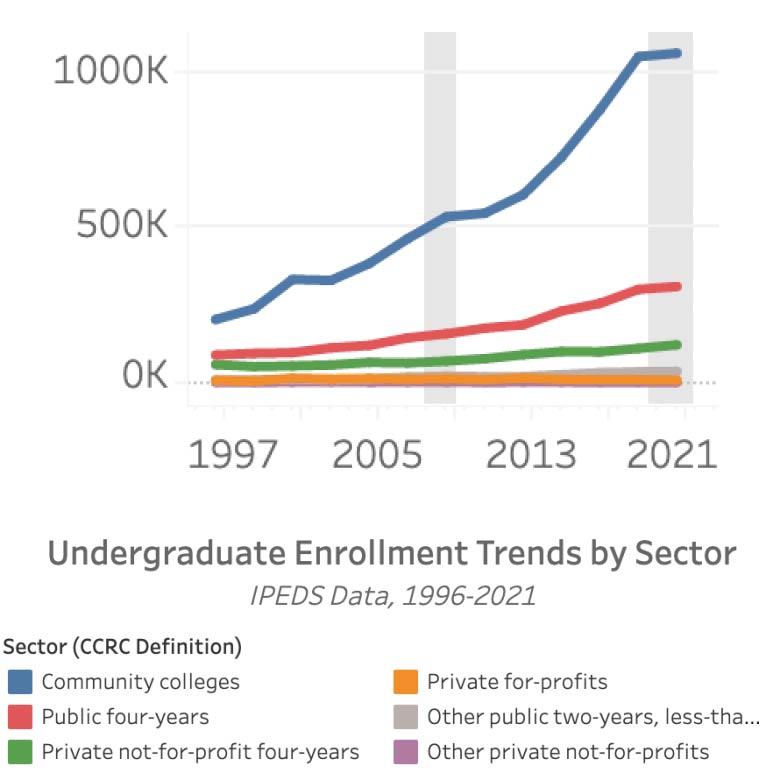When you think of a college student, you might imagine a young adult leaving home, moving into a dorm, navigating a campus and maybe attending a fraternity party. That’s an outdated image. We’ve written a lot about how older adults with jobs and children are a giant group on campus. But a more surprising species is spreading through the college registrar’s rolls: teenagers living at home, taking yellow buses to high school and maybe scrambling home before curfew.
The number of high schoolers taking college classes has been surging for more than two decades. In what is called dual enrollment, students simultaneously earn high school and college credits from a single class. These advanced college-level courses are no longer just for gifted students who have exhausted the high school course catalog. Now they’re a tool to encourage more Americans to enroll in college by giving them an early taste of post-secondary education and a head start with a few credits.
Dual enrollment students were estimated at more than 1.4 million in the fall of 2022, and account for almost one out of five community college students. That’s according to estimates from the National Student Clearinghouse Research Center. Some scholars believe the total number could be much higher, perhaps 2 million students, when spring 2023 course taking is included. Dual enrollees appear to far outnumber the 1.1 million high school graduates in the class of 2022 who took at least one Advanced Placement exam.
“It’s meteoric,” said Brian An, a sociologist at the University of Iowa. “When I first started working in dual enrollment research in the mid 2000s, it was nowhere near these numbers. If you had told me 10 years ago that 20% of all community college students would be dual enrollment, I would have said that’s crazy talk.”
Community colleges oversee roughly 70% of dual enrollments with four-year colleges running the remaining 30%. Students often don’t pay any college tuition for dual enrollment classes. In most cases, high schoolers never step foot on a college campus; the class is taught in a high school classroom by a high school teacher. English composition and college algebra are popular.

Students are flocking to these courses because they perceive that it’s easier to earn college credits through dual enrollment than through Advanced Placement, said University of Iowa’s An. With Advanced Placement, students have to score high enough on an exam to earn college credit. With dual enrollment, a passing grade is sufficient.



